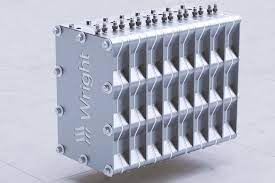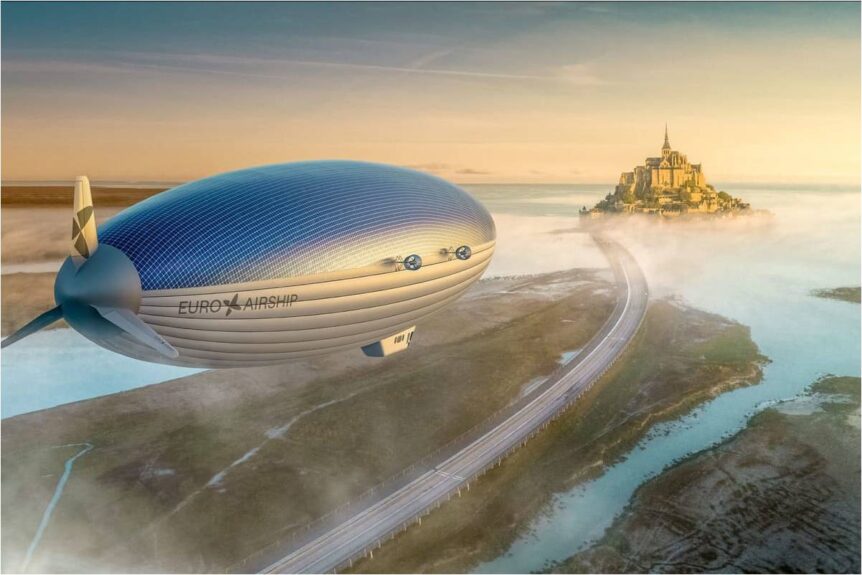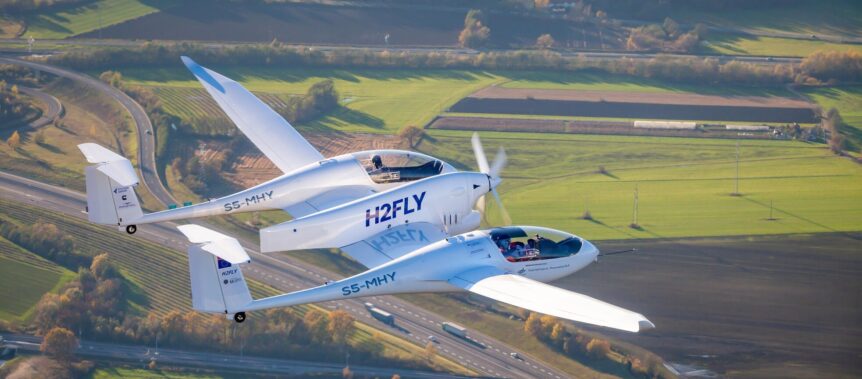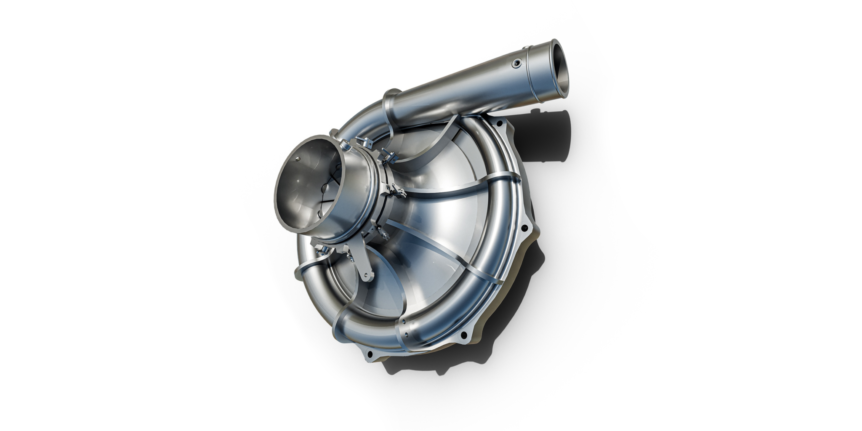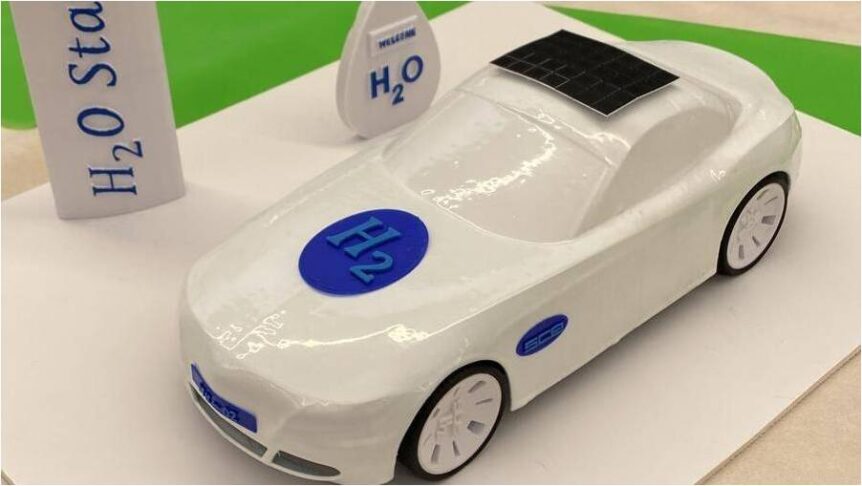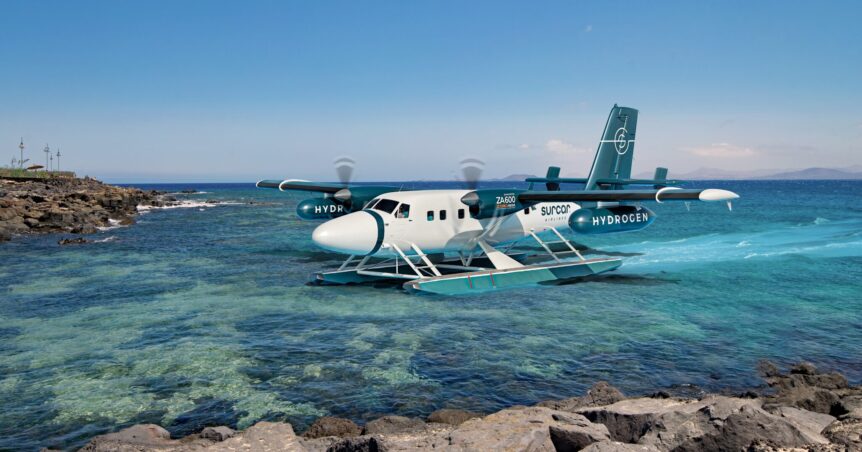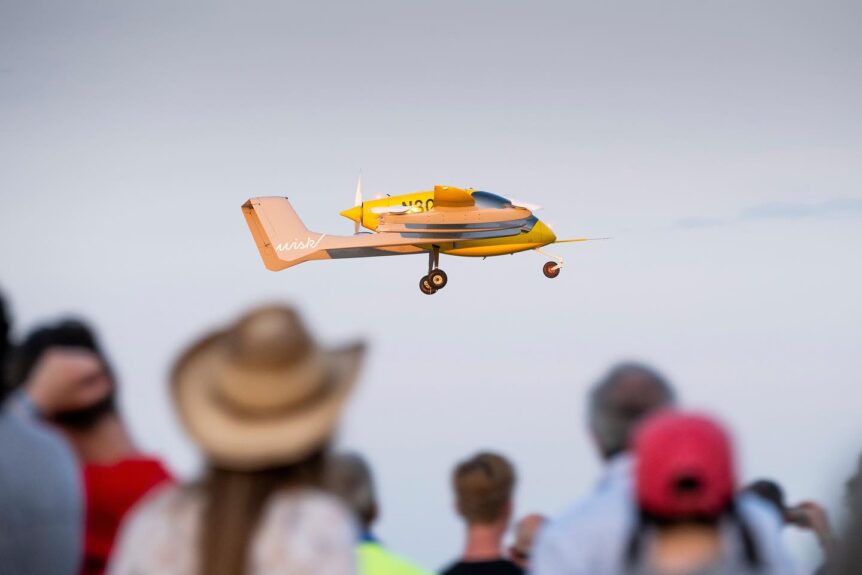Jeff Engler of Wright Electric wants it all. He wants lightweight, high-power electric motors and inverters to control them. He wants lightweight generators and now lightweight, high energy density batteries to store that electricity. He wants to meet the goal that, “By 2040, Wright will eliminate carbon emissions from all flights under 800 miles.” A more recent iteration of the company’s web site includes the goal of “Decarbonizing the industries that are hardest to decarbonize.” These would seem heady ideals but Wright Electric seems to be making steady progress toward fulfilling those goals. The Motor Their motor has been tested to 1,000 kilowatts (1,340 horsepower), with expectations that it could reach 2,000 kW (2,680 hp.). According to Aviation Week, “The motor produced 1 megawatt of peak power on a dynamometer test stand at Wright’s facility in Albany, New York. The company has signed a Space Act Agreement with NASA to test the motor in an altitude chamber at the NASA …
Solar Airship One – a Grand Voyage Awaits
Having circumnavigated the world by balloon and solar-powered aircraft, Bertrand Piccard is ready to make a third around-the-world flight – this time in Solar Airship One, powered by the sun and hydrogen fuel cells. Able to make the 40,000 kilometer (24,855 mile) trip in one gigantic hop, the 151 meters (495.4 feet) long craft will be borne aloft on 50,000 cubic meters (1,766,000 cubic feet) of helium. Unlike his lonely stints at the controls of Solar Impulse 2, Piccard will be joined by two worthy co-pilots; Dorine Bourneton, “The first disabled woman to become an aerobatic pilot (Bourneton was severely injured at age 16 in an aircraft accident) and Michel Tognini, a former French Air Force fighter pilot and European Space Agency astronaut (Tognini has been twice to space, in 1992 and 1999).” The Craft Its helium sealed in 15 large gas bags that emulate the shape of the airship, the ship carries 50,000 cubic meters (1.77 million cubic feet) …
Ever Greater Range for Elektra Solar
A Second Win Having just come in a close second in a race against an electric car, Elektra Solar’s Trainer attained a Personal Best in range for a flight between Munich, Germany and Bern, Switzerland, a distance of 313 kilometers (194.5 miles). Calin Gologan noted the route from its home field in München Oberpfaffenhofen to Bern Airport) was highly symbolic, starting from the site where, “We founded the company (Elektra Solar) 10 years ago as a startup from the DLR Institute of Robotics and Mechatronics in Oberpfaffenhofen. We were now able to fly our aircraft purely electrically from the DLR location directly to the Electrifly-in location in Bern.” Pilot Uwe Nortmann flew in both outings, both extending the range achieved by this type of electric aircraft. As Calin points out on his Facebook page, “Last year we won this contest with a leg of about 190 km (118.1 miles). A huge progress in one year.” Looking forward to closing the …
H2Fly Achieves HEAVEN’s Goal
H2Fly has an historic aircraft in its fleet, the HY4, as part of the HEAVEN program to, “Demonstrate the use of liquid, cryogenic hydrogen in aircraft.” Originally the G4, the craft won the NASA Green Flight Challenge in 2011, posting a passenger mile per gallon efficiency of 403.5 – equivalent to driving your loaded Prius from San Francisco to Los Angeles on under four gallons of fuel. Resurrected as the HY4 and flown on gaseous hydrogen, the craft has been reconfigured to fly on liquid hydrogen, expanding its range significantly. According to the HEAVEN program, “The hydrogen-electric ‘HY4’ demonstrator aircraft took off from Maribor, Slovenia, and saw safe and efficient operation throughout multiple flight tests.” Announced September 7, these were the first piloted flights of a liquid hydrogen fueled aircraft. Four flights, including one that lasted over three hours, “Lay the foundation for long-range, emissions-free flight, with liquid hydrogen doubling the range of the HY4 aircraft to 1,500[kilometers], compared to …
A Race Between an Elektra Solar Trainer and a Lucid Air Sedan
A race last week between an Elektra Solar Trainer and a Lucid Air sedan shows the great strides made in electrification for both cars and airplanes. Electrive.com reports, “A special race went down this week in Germany, setting an electric car against an ultra-light electric aircraft in the ‘E-Flight Challenge 2023.’” This was a relatively high-end affair, as is often true at the onset of new technologies replacing more well-established ones. The Lucid Air sedan comes in several levels of performance and trim, with the least expensive starting at $78,900. The “Pure” rear-wheel drive features a single 480 horsepower motor and is claimed to travel up to 410 miles on a single charge. In all-wheel drive form, it costs $83,900 and manages 384 miles on a single charge of its 92 kilowatt-hour battery. Pures weigh around 2,100 kilograms (4,620 pounds) A great deal lighter at around 1,332 pounds maximum takeoff weight, the Elektra Solar Trainer flies on a mere 12 …
ZeroAvia Turbo Charges a Fuel Cell
Turbo chargers were an early method of increasing power at altitude and that ZeroAvia is crafting for modern electric, fuel-cell powered aircraft. Mechanical Turbochargers During WWII, your editor’s father was a crew chief and occasional flight engineer on C-47’s, B-17’s, and B-24’s. The bombers had turbo-charged engines to increase power as noted below. (This is just part one of three training films, all on YouTube, giving some indication of the difficulties pilots faced in pre-electronic times.) The flight manual for the B-17 includes the following notes on the turbochargers. “The B-17F has four 1200 Hp Wright Cyclone Model R-1820-97 engines of the 9-cylinder, radial, air-cooled type with a 16-to-9 gear ratio. “Each engine has a turbo-supercharger to boost manifold pressure for takeoff and maintain sea-level pressure at high altitude.” B-24’s and other similar craft had the same type of system. (ZeroAvia’s rough equivalent is much quieter and a loss less smoky.) The manual notes the F models had manual control of …
Green Hydrogen from Scrap Metal and Water?
Can we make green hydrogen (or other energy sources) from scrap we otherwise throw away? One of the frequently announced “breakthroughs” recurrently finding its way to our attention is that scrap food or farm waste has found its way to becoming aviation fuel, for instance. United and Alaska Airlines have flown aircraft powered by biofuels produced from food waste by suppliers at SEATAC airport in Seattle, Washington. Hydrogen is undergoing a growth spurt. The U. S. Department of Energy explains, “Hydrogen is an energy carrier that can be used to store, move, and deliver energy produced from other sources.” Green hydrogen seems to be an answer to many demands. It comes from splitting water, and if produced through clean means, is a carbon neutral to carbon negative product. Stainless Steel Powder and Water Dr. Guy Ben Hamu, Head of the Department of Mechanical Engineering at Sami Shamoon College of Engineering, explains the process uses H2 trapping, something usually related to …
ZeroAvia to Supply Surcar with Hydrogen Floatplanes
An Island-Hopping Customer Surcar Airlines is an enterprise based in the Canary Islands which hopes to serve its island routes with ZeroAvia-motored, hydrogen-fueled DeHavilland Twin Otters. But not right away. Starting with conventionally-powered turbine twins, Surcar is working on a process, “Based on starting something totally new and that touches so many sectors at the same time. “Today we confirm that we have signed an agreement with@zeroavia to fly its ZA600 hydrogen-electric engines in order to operate ecological flights. “We will operate Twin Otter seaplanes updated with the ZA600 propulsion system on our sightseeing flights.” This 600 kilowatt (804 horsepower) system is now being tested and certified for aircraft seating nine to 19 passengers. “This implies the commitment to lead the electrification of aviation in the Canary Islands and achieve zero-emission flights in the archipelago.” This ambition drives the airline to follow, and possibly lead in the European Union’s aim to, “…Reduce greenhouse gas emissions by 55 percent by 2030 …
Dreaming of Big Electric Airplanes: CATL and COMAC
CATL and COMAC are dreaming of big electric airplanes. The first company has made some recent battery breakthroughs, and the second has recently brought China’s biggest jet airliner to market. CATL. Contemporary Amperex Technology Ltd., is a behemoth. According to TheInformation.com, “The company spent $124 million to acquire a lithium mine in China’s Jiangxi province, an operation that would feed into a $2.1 billion battery factory it was building nearby. And in October, it spent $3.6 billion to buy 25-percent of a cobalt operation in the Democratic Republic of Congo. This year, CATL has spent $1 billion on a lithium brine operation in Bolivia, $885 million for lithium rights in China’s Xinjiang province and $920 million for lithium rights in the Chinese province of Sichuan.” This globe-girdling spate of acquisition indicates the seriousness of China’s move to dominate world battery markets. With recent news of CATL’s 500 Watt-hour-per-kilogram cells and their possible use in large aircraft, the need to compete …
Wisk Wows at Oshkosh
A Wisk Cora flew autonomously several times along the length of the 8,002-foot main runway, a first at the Experimental Aircraft Association’s 2023 AirVenture in Oshkosh, Wisconsin. The July 25 event was, “The first-ever public demonstration of a fully autonomous eVTOL fixed-wing airtaxi,” according to the company. Under development and appearing in different configurations over the last several years Wisk’s aircraft have flown in Hollister, California and in New Zealand. Cora represents the fifth generation of such vehicles. Wisk, a Boeing partner, is not stopping there. The flight from another perspective, with an explanation of the noise on the soundtrack: “The noise is the 787 APU, not the @WiskAero. ‘ Note how the noise drops as the auxiliary power unit shuts down, with crowd noise competing with the Cora for dominance. https://twitter.com/i/status/1684023361804943360 A Future with Four Seats The latest iteration for the firm is their sixth-generation craft, simply called Generation Six. It’s a four-seater, with ample room for passengers and …

